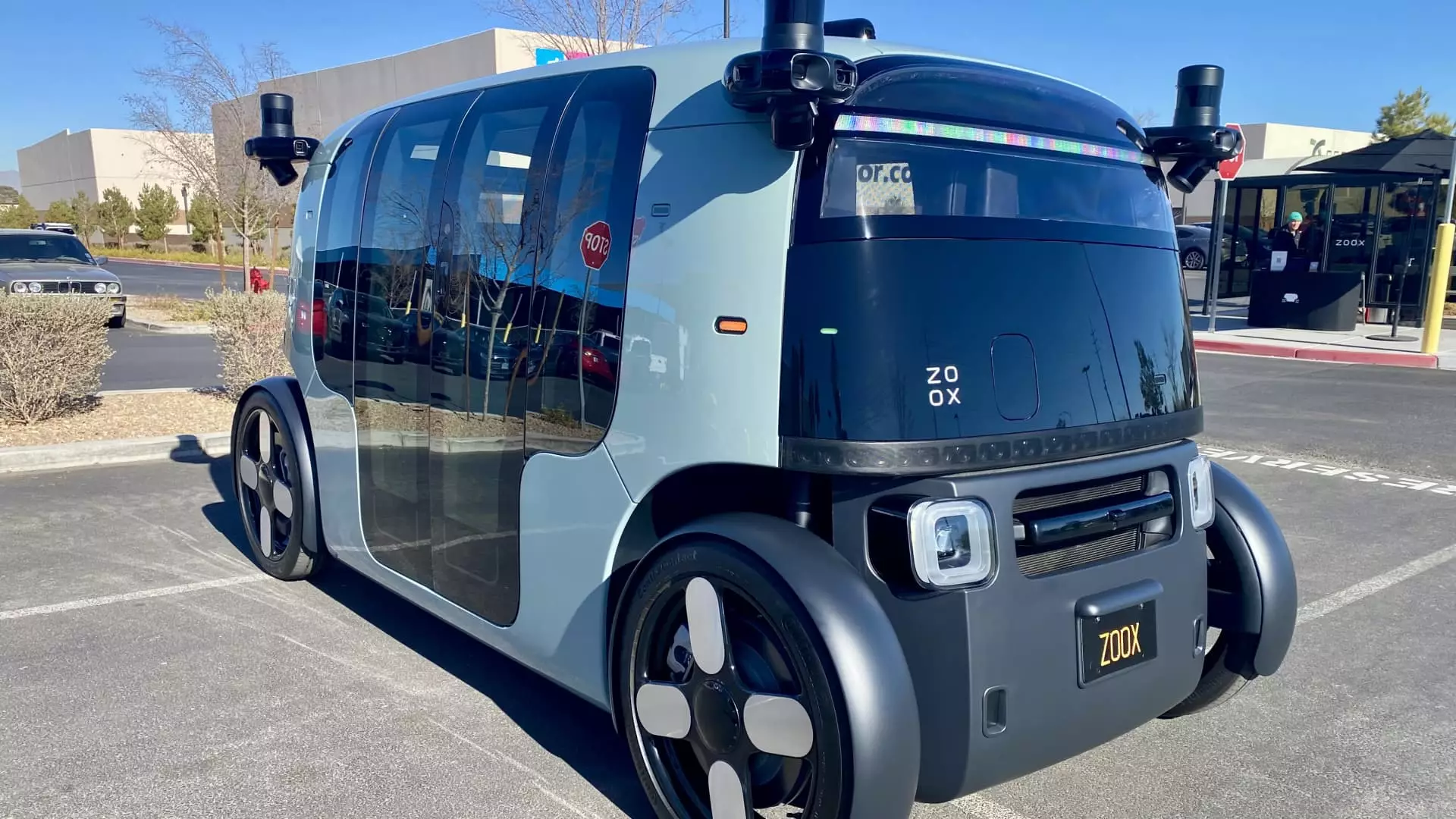The autonomous vehicle industry stands at a crucial juncture, and Amazon’s self-driving unit, Zoox, is gearing up for a transformative year. With plans to roll out robotaxi services to the public, the company is not just focused on operational expansion but also on meeting consumer expectations and redefining urban transportation. As Zoox accelerates its journey, several factors will determine whether it can sustain momentum in an increasingly skeptical market.
Zoox’s endeavor to commercialize its autonomous vehicle operations marks a significant moment for the company and the robotaxi industry as a whole. The ambitious goal of introducing rides to the public “quite soon” reflects Zoox’s confidence in its technology and operations. Chief Technology Officer Jesse Levinson’s positive outlook underscores the remarkable progress Zoox has made since its inception. However, the challenges posed by economic uncertainties and declining investor enthusiasm in the autonomous vehicle sector loom large.
Zoox, founded a decade ago, was acquired by Amazon for a substantial $1.3 billion in 2020. This financial backing has positioned Zoox uniquely in the competitive landscape, but it does not insulate it from the broader trends affecting the autonomous vehicle market. While companies like General Motors and Ford have abandoned their self-driving units, Zoox remains committed to its mission. The difference in approach—developing vehicles designed from the ground up for autonomy—could be a game-changer, distinguishing Zoox from industry giants like Waymo that have retrofitted existing vehicles.
Las Vegas stands at the forefront of Zoox’s commercialization efforts. The company is poised to launch an “Early Rider Program” in the city, with broader public access expected within the year. Other cities such as San Francisco and potentially Miami and Austin are on the horizon, although no specific timelines have been released for these expansions. Levinson envisions a future where autonomous vehicles become the preferred mode of transportation in major U.S. cities, but achieving this will require overcoming a series of critical hurdles.
The design of Zoox’s robotaxi is noteworthy. With a unique, cabin-less structure that lacks traditional controls, the vehicle is engineered for a fully autonomous experience, which can evoke mixed responses. Critics have described the design as simplistic, yet its novel approach signifies a substantial shift away from conventional vehicles. While this design may not cater to all consumer preferences, it emphasizes Zoox’s commitment to a new standard of transportation.
During testing in Las Vegas, the autonomous vehicle exhibited impressive handling, making appropriate turns and maintaining assertiveness without crossing into aggression. That said, the vehicle did face moments of indecision, raising questions about its situational awareness and capacity to navigate complex scenarios. Levinson emphasized the importance of finding the right balance between assertiveness and caution, an ongoing challenge for autonomous technology developers.
The road to commercialization is fraught with obstacles. Companies like GM’s Cruise have experienced setbacks—most notably, a major incident that prompted a halt in operations. This served as a stark reminder of the risks involved in deploying autonomous vehicles in public spaces. The Zoox team appears well aware of the stakes, taking a conservative approach to expansion that prioritizes safety and reliability.
Despite showing promise, Zoox has entered a competitive field, with Waymo firmly established as a market leader. Waymo’s gradual growth—expanding from supervised to unsupervised rides—sets a high bar for Zoox to meet. While Levinson acknowledges that Zoox may not achieve meaningful commercial success in its first year of public operation, the company is focused on delivering value to its early customers, laying the groundwork for future growth.
However, experts like Sam Abuelsamid are cautiously optimistic. While they recognize Zoox’s technological advancements, questions about the business model and sustainable profitability persist. The robotaxi concept has proven more complex than many corporate giants anticipated a few years ago, and with rising costs of operation and ongoing regulatory complexities, Zoox must navigate a challenging landscape.
The journey toward successful commercialization of autonomous vehicle services is filled with both challenges and opportunities. As competing companies scramble to showcase their innovations, Zoox must continuously refine its technology, adapt to regulatory environments, and establish effective operational models. Only through overcoming these hurdles will Zoox, and others in the autonomous vehicle sector, fulfill the lofty ambitions of revolutionizing urban mobility and creating a safer, more efficient transportation ecosystem.
The stakes are high, but the commitment from Zoox to deliver on its promises could shape the future of autonomous transportation, influencing everything from urban planning to consumer behavior. As the industry evolves, stakeholders will closely monitor Zoox’s progress, paving the way for a ride-hailing revolution driven by innovation and technological advancement.

